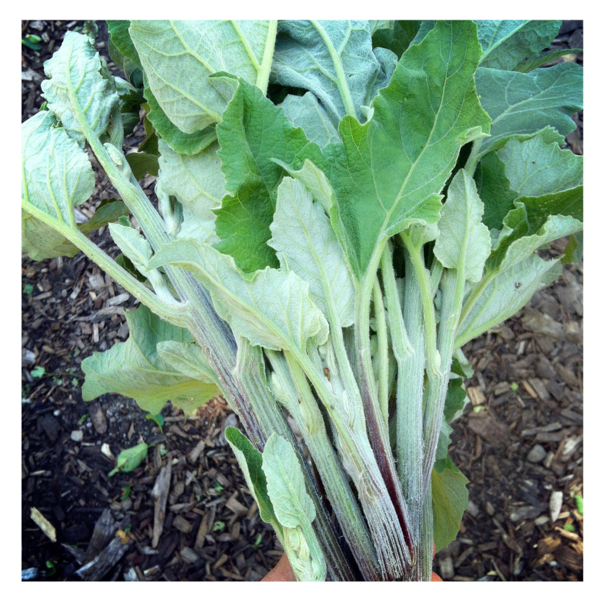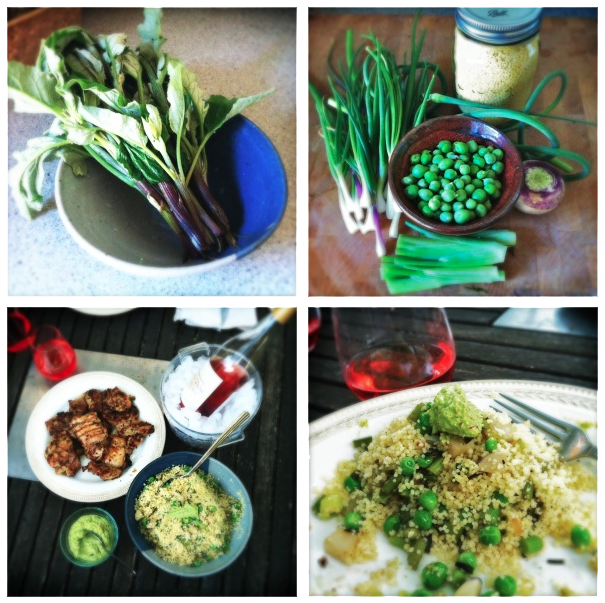
In my previous post on foraging burdock, I talked about harvesting the roots. Now it’s time to forage the new stalks that shoot up from the plant in their second year, before they flower. I harvested the burdock from an empty city lot next to the fledgeling Greenleaf Community Garden, where my partner has a plot. The rangy, adaptable, dare I say, pernicious, weeds were spouting from rock piles, cracked asphalt and demoed housing debris. Not exactly your idilic meadow location. Having never used burdock stalks before, I picked a variety of sizes, from pencil thin to quarter-size in diameter. They have a stringy, fibrous skin, much like cardoons, that make them tough to cut. The cut part also quickly oxidizes, turning purplish brown.
As I roamed through the lot picking burdock, I starting thinking how best to prepare it. Because the stalks are said to taste like artichoke hearts, I thought pairing them with my freshly-picked garden shell peas, spring onions, turnip and garlic scapes might work well. My partner also had baby fennel bulbs in his garden, which would fit right in. This felt like a pasta or rice type of dish, so I dreamed up an garden couscous recipe.
Once home, I stripped off the leaves from the burdock. Then, starting at the large end, I pulled off the skin strings. Each stalk went into a bowl of water with lemon juice to keep them from oxidizing. The small stalks were quite tender and didn’t need much work. The medium thumb size stalks kept leaving fibrous bits on them and I ended up hacking those to pieces. The largest talks were actually the easiest to strip, revealing a solid, non-fibrous core. I cut all the stalks into 1/4 dice and dropped them back in the water. Now they were ready to cook with the rest of the veggies.
The burdock stalk did indeed add an artichoke character to the dish, with a texture much like peeled broccoli stem. Next time when I forage for burdock, I’ll choose the thicker stalks, as they were the most flavorful and easiest to prepare.
